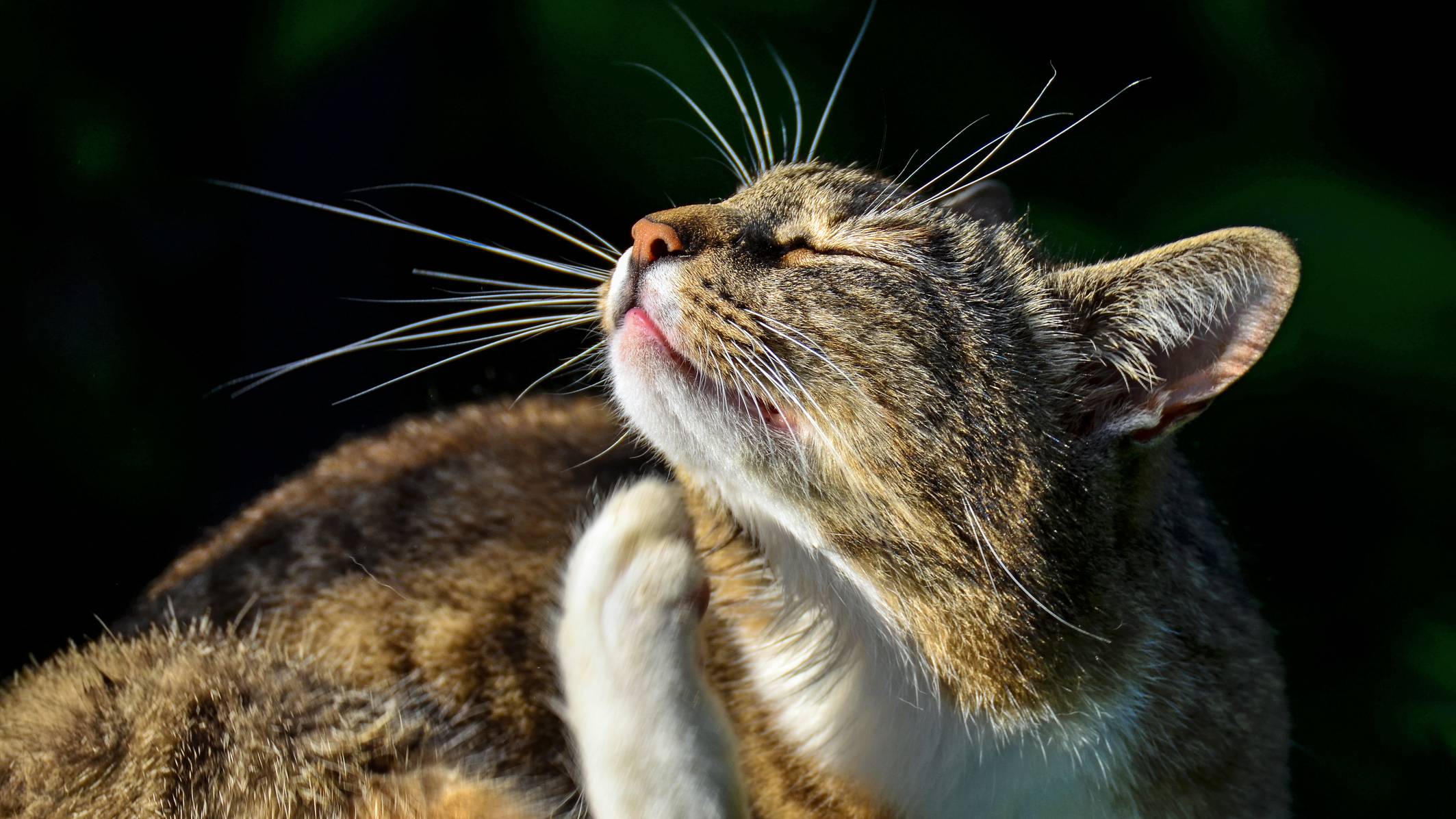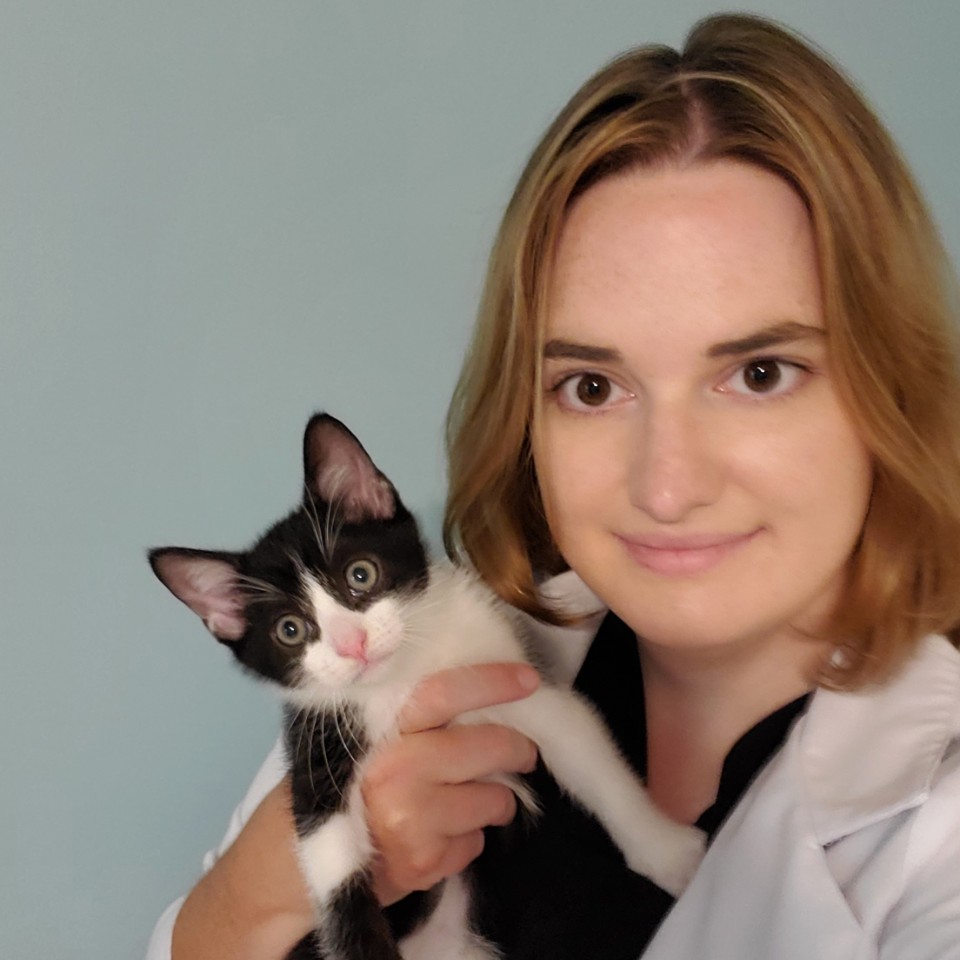What is the flea life cycle? And how you can break it
Learn the four stages of the flea life cycle, so you can keep fleas at bay and avoid reinfestations

If you're hoping to free your pet and your home from unwanted critters, it's important to understand how the flea life cycle works.
Fleas are more than just a nuisance, they can also cause major problems for your pet. Flea bites can cause itching and skin problems, particularly for pets who are allergic to flea saliva, a condition known as flea allergy dermatitis.
Fleas also transmit diseases such as Bartonella, tapeworm, and typhus. Severe flea infestations can result in blood loss that is significant enough to cause iron deficiency anemia, which can even lead to death in young animals. Clearly, fleas are no joke.
So, how do you know when your pet has fleas? Adult fleas are visible with the naked eye, but you may not always catch them – they like to hide in your pet’s fur and may be removed by your pet’s natural grooming behavior.
You may also see 'flea dirt' or feces on your pet, which is dark brown or red debris on the skin. If your pet has fleas, understanding the flea life cycle is essential so that you can control the infestation and get the fleas out of your home.
What is the flea life cycle?
To rid your pet and your home of fleas, it is important to understand how the flea life cycle works. The flea life cycle consists of four stages: egg, larva, pupa, and adult. A single female flea can lay up to 50 eggs in a single day, leading to a rapid infestation.
The eggs are laid on your pet’s hair coat and fall off into the environment, especially in areas your pet frequents, such as carpets and bedding.
It takes one to ten days for flea eggs to hatch into larvae. Larvae live in dark, moist areas such as in your carpeting, in cracks between floorboards, along baseboards, in bedding, and in shaded areas of your yard. Larvae then develop into pupae by forming a sticky cocoon.
Pupae can remain dormant for weeks or months and are resistant to freezing, drying, and insecticides. When environmental conditions are right, adult fleas emerge from the pupae and immediately begin feeding on the host (your pet). Female adults begin laying new eggs within 24 hours.
The entire flea life cycle takes about three weeks to complete. Adult fleas live for about two or three months and will stay on your pet biting, feeding, and laying eggs during this time.

How to break the flea life cycle
To take control of a flea infestation, you must not only kill the adult fleas but also stop eggs and larvae from developing into new adults. This can be achieved by using prescription veterinary flea control products.
These products contain both a flea adulticide to kill adult fleas and insect growth regulators which disrupt the development of eggs and larvae to help break the flea life cycle. Some examples of these veterinary flea control products include:
- Advantage II (Imidacloprid)
- Bravecto (Fluralaner)
- Comfortis (Spinosad)
- Frontline (Fipronil)
- Nexgard (Afoxolaner)
- Revolution (Selamectin)
- Simparica (Sarolaner)
- And many others
Your veterinarian can help you choose a product that is right for you and your pet. To break the flea life cycle, all pets in the household must be treated, depriving fleas of a suitable host to feed on. Without a host, newly emerged fleas will die within one to two weeks.
In addition to using flea control products on your pets, environmental sanitation is important to remove flea eggs and larva from your pet’s environment. Consider taking these following steps to help control the infestation:
- Vacuum carpets frequently, especially areas where pets rest and play
- Place a flea collar in your vacuum bag to kill emerging adults
- Clean thoroughly under furniture, along baseboards, and in cracks and crevices where flea larvae like to hide
- Steam clean carpets and flooring
- Wash pet bedding in hot water frequently
- Consider enlisting the help of a pest control professional for severe infestations
Will fleas go away on their own?
Unfortunately, fleas will not go away on their own and, if left untreated, the problem will only get worse. Adult fleas live for two to three months and females will continue laying up to 50 eggs per day during this time. These eggs then hatch into new larvae, which become pupae, and then new adult fleas. They begin laying eggs – and the cycle continues.
Untreated fleas on your pet can also lead to health problems such as chronic itching, skin problems, iron deficiency anemia, tapeworms, or Bartonella infection.
Some pets are also allergic to flea saliva and may develop flea allergy dermatitis, a condition that causes severe itching in response to flea bites. In young animals, heavy flea infestations can lead to severe anemia and even death.

The best way to prevent fleas on pets
The best way to prevent fleas on your pets is by using a prescription flea prevention product from your veterinarian all year round. This will prevent an infestation from starting in your home, so you never have to deal with trying to rid your home of fleas.
With so many flea prevention products on the market – including topicals, collars, and oral options – you are sure to find something that fits your preferences, your pet’s needs, and your budget.
Your veterinarian can help you choose an appropriate product and will advise you on the proper dose and frequency of treatment. Be sure to follow your veterinarian’s instructions closely.
What to do if your pets have fleas
If your pets have fleas, or if they just seem itchy and uncomfortable, the first step is a visit to your veterinarian for an examination and some prescription flea control products. Don’t waste time with home remedies and over-the-counter options – these treatments rarely work and the longer your pet goes untreated, the worse the flea problem will get.
A prescription flea control product will bring your pet some much-needed relief and will help break the flea life cycle. This, along with good environmental sanitation, will allow you to eliminate the infestation and have a flea-free home once more.
Flea treatment not working? Read our vet guide to find out why.
PetsRadar Newsletter
Get the best advice, tips and top tech for your beloved Pets
Dr. Elizabeth Racine is a small animal general practice vet covering all things pet health and wellness. Her special interests include veterinary behavior, nutrition, and internal medicine.
As a freelance writer, Dr. Racine has written content for major companies in the industry such as the American Kennel Club, Merck Animal Health, Bayer PetBasics, Elanco, and CareCredit. In her free time, Dr. Racine enjoys playing trampoline dodgeball, hiking with her beagle Dasher, and spending time with her three mischievous cats.

